Pawpaw |
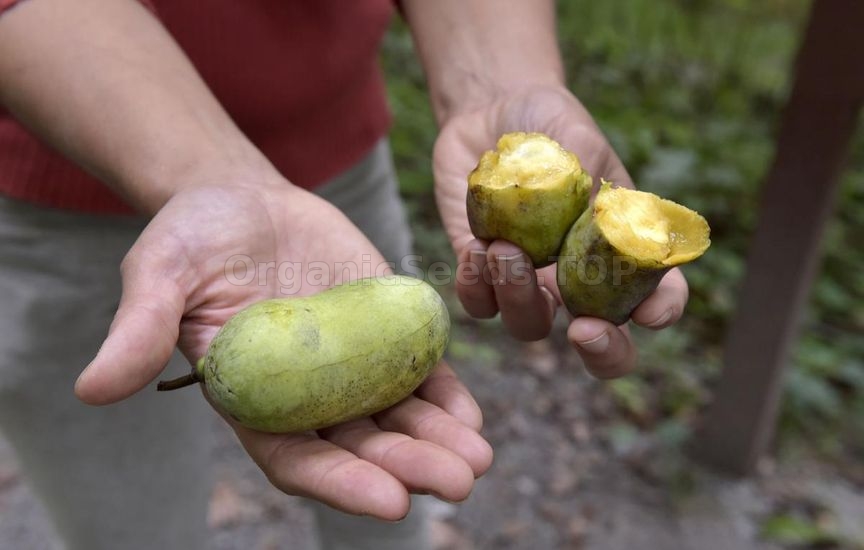 Pawpaw (Asimina triloba) is the largest, edible fruit native to the United States. And although it’s native to temperate North America - across 26 states, and into southern Ontario, Canada pawpaw belongs to a tropical fruit family, Annonaceae, also known as the Custard Apple family. Its relatives include cherimoya, soursop (guanábana), and sweetsop. But the most important detail, surely, is flavor: often described a cross between mango and banana, with a dense, custardy texture, the pawpaw is exceptional. It’s also among the easiest fruit trees to grow. A poster child for organic gardening, pawpaw is not majorly affected by pests, and chemical spraying - organic or otherwise - is not needed. Pawpaws (and other Asimina species endemic to the southeast and Florida) are the sole host plants of the caterpillar of the Zebra Swallowtail butterfly, occupying an important ecological niche in eastern forests. Its fruit are eaten by everything from opossum and squirrels, to fox and raccoons. But the tree itself is spared - mammals and insects do not favor the leaves or twigs of pawpaw. Even deer do not browse pawpaw. 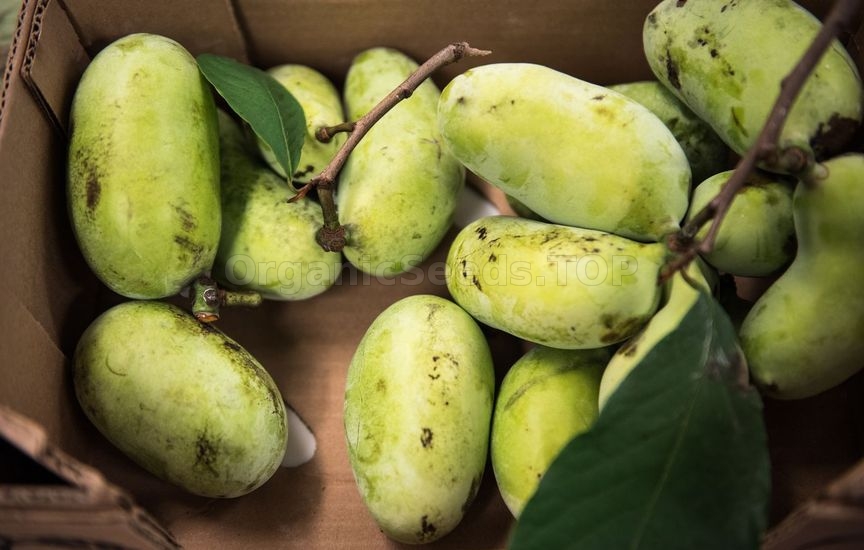 Humans have eaten pawpaw in North America for thousands of years. The continent’s earliest native people ate the fruit and even used the tree’s fibrous inner bark for cordage and textiles. More recently, the Shawnee of the Ohio River Valley celebrated a Pawpaw Moon (approximately the month of September, when pawpaw is ripe in much of the country), and elsewhere, from Louisiana to Illinois, Native American placenames translate to “The Pawpaw Eaters” and “Pawpaw Village.” Pawpaw was important to the European colonists and pioneers who settled the country, especially as the frontier pushed westward. Throughout Appalachia and the Midwest, dozens of towns and villages are named Paw Paw, as are creeks and streams, and streets and avenues. After a few decades of neglect, Americans are returning to this historic fruit. Some still seek it in the wild, but many others are bringing the pawpaw out of the woods and into the garden. Landscape Uses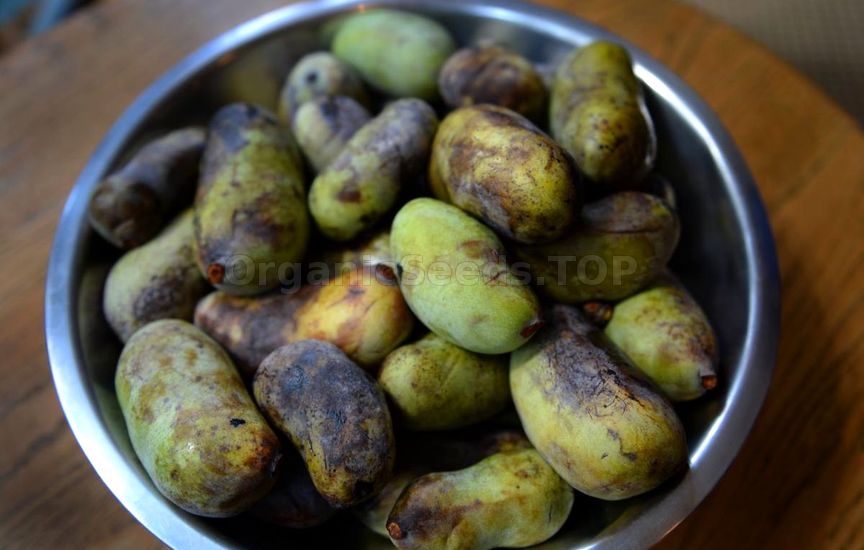 While its fruit is much celebrated, the pawpaw is also a uniquely beautiful tree. Its leaves are among the largest in the Eastern forest - often up to a foot in length - with a decidedly tropical appearance. Its aesthetic virtues have long been noted: In 1904, noted horticulturist and National Parks champion J. Horace McFarland remarked,“The tree...is worth planting for its spreading richness of foliage. The leaves are large, and seem to carry into the cold North a hint of warmth and of luxuriant growth not common by any means.”
In the wild, pawpaws are an understory tree, thriving under the shade of the forest canopy, where they grow tall and thin, with sparse branching. But when grown in full sun - and if fruit is your primary objective, you’ll want to plant in full sun - the tree takes on a stately, pyramidal shape, reaching 30 feet in height. 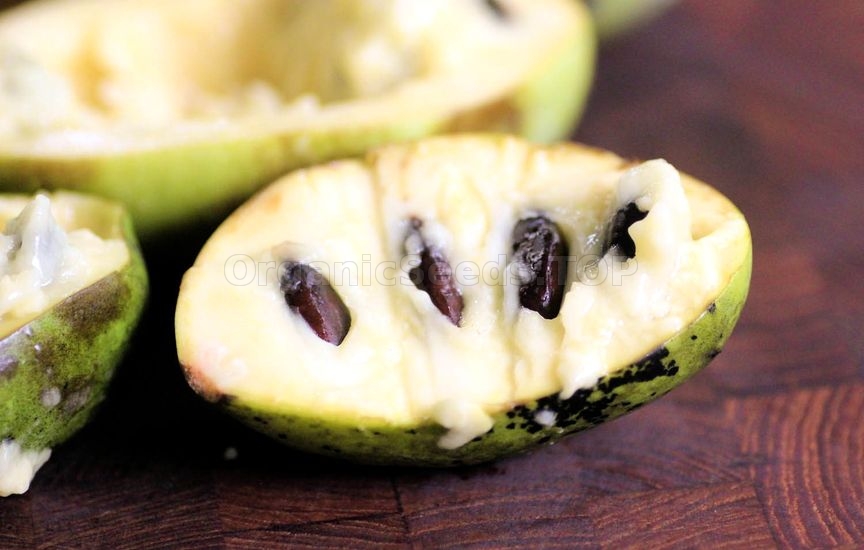 Regardless of where it’s growing, pawpaws form dense clonal patches via root suckers, a habit and feature of American woods enshrined in the American folk song, "Way Down Yonder in the Pawpaw Patch." These shoots can be removed - recommended for the fruit grower—or, if allowed to remain, will form a thicket. Pawpaws are native from the Atlantic coast to eastern Nebraska, and from southern Michigan to the Florida Panhandle - but growers are testing the tree’s limits in all directions. Pawpaws are now grown in the Pacific Northwest, New England, the upper Midwest, and elsewhere around the world. Soil and Site Selection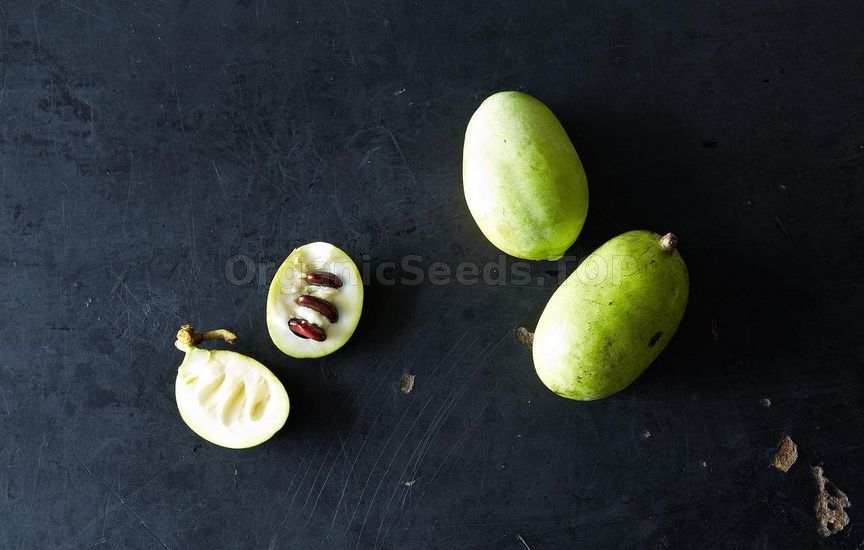 In the wild, pawpaws are often found growing in the rich, alluvial soil along rivers, creeks, and streams. In the garden, pawpaw prefers slightly acidic soil, with ph 5.5-7, but is forgiving of many soil types. Ideal sites are moist, well-drained soils - but waterlogged, swampy areas should be avoided.
As mentioned above, although its wild habitat is the forest understory, pawpaw trees produce more fruit in full sun (which is where I’ve placed my own backyard trees - in full, unrelenting sun). But perhaps your only space is shaded, or perhaps you wish to mimic what’s found in nature: pawpaw will produce fruit in either case. Spacing of trees, for orchard production, is recommended at 8 feet between trees, and 12 feet between rows (for mowing). But the home gardener can be flexible: a pawpaw patch, allowed to sucker, or a hedge even, can achieve design goals and still result in fruit. Regardless, pollination is often a concern, and it’s recommended to plant trees closer, rather than further, using orchard recommendations as a rough guide. Propagation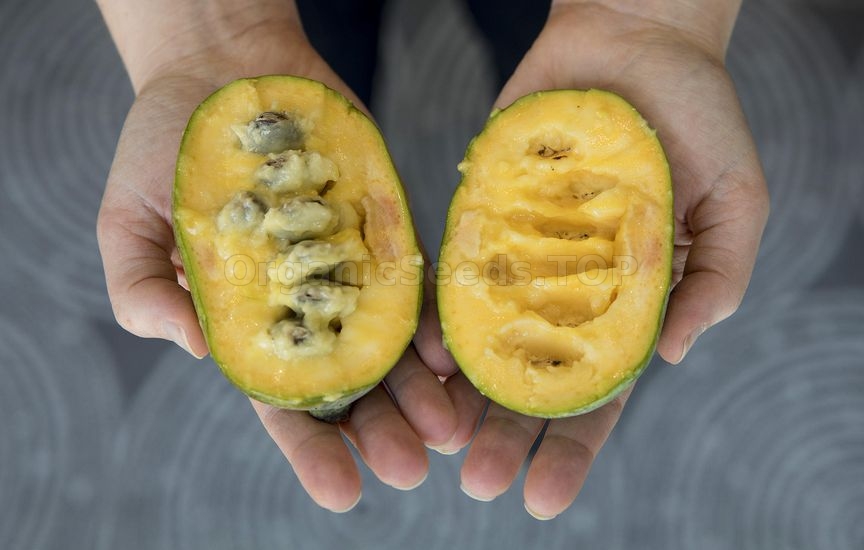 Pawpaw is easily grown from seed, but there are a few rules to follow. First, do not let the seed dry out. A dry seed is a dead seed. Second, you’ll need to clear out space in your refrigerator - pawpaw seeds need to to experience a period of cold stratification - up to 100 days below 41°F. This happens, in nature, when fruit falls to the forest floor, and seeds spend the rest of winter covered in a bed of leaves and other woodland detritus.
But the process is recreated reliably in your refrigerator. (If your winters aren’t cool enough, seeds planted directly outdoors could fail to germinate the following year). Thoroughly clean your seeds, and pack them in ziplock bags with a moist medium, such as peat or sphagnum moss. Store in a refrigerator, but not your freezer (in addition to drying, prolonged freezing will also kill pawpaw seeds). In spring, plant your seeds in the ground or in containers. Harvesting Fruit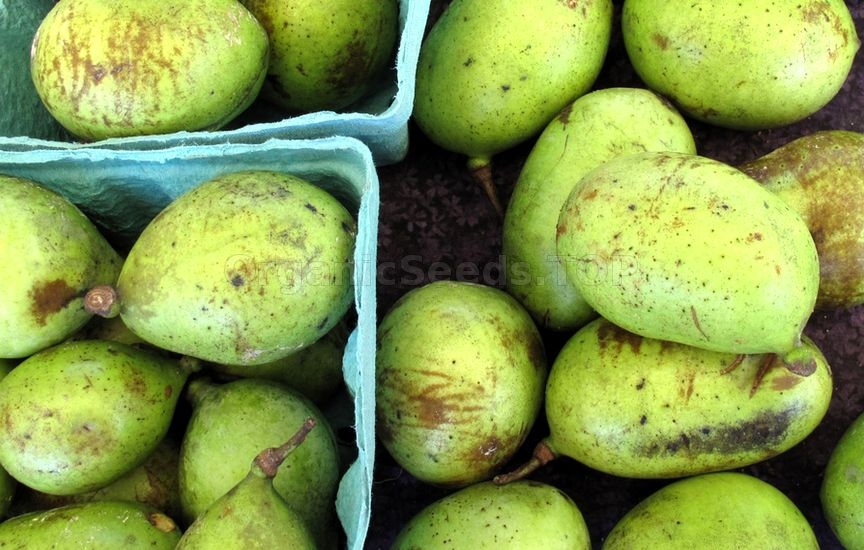 If grown from seed, pawpaws will begin to flower and fruit in six to eight years, or when the tree reaches roughly six feet in height. But the quickest route to pawpaw fruit is through grafting. This is also the only successful way to clonally propagate specific varieties of pawpaw. Knowing when to pick pawpaws is the first step to enjoying the fresh fruit. A ripe pawpaw can be picked from the tree if it “gives” to pressure. To test, squeeze gently with your thumb and forefinger: if there’s give, you can pick or cut it from the tree. If it’s hard as a rock, you’ll have to return another day. Pawpaws can’t be forced to ripen - picked too early, an unripe pawpaw will darken, but never turn soft and sweeten. 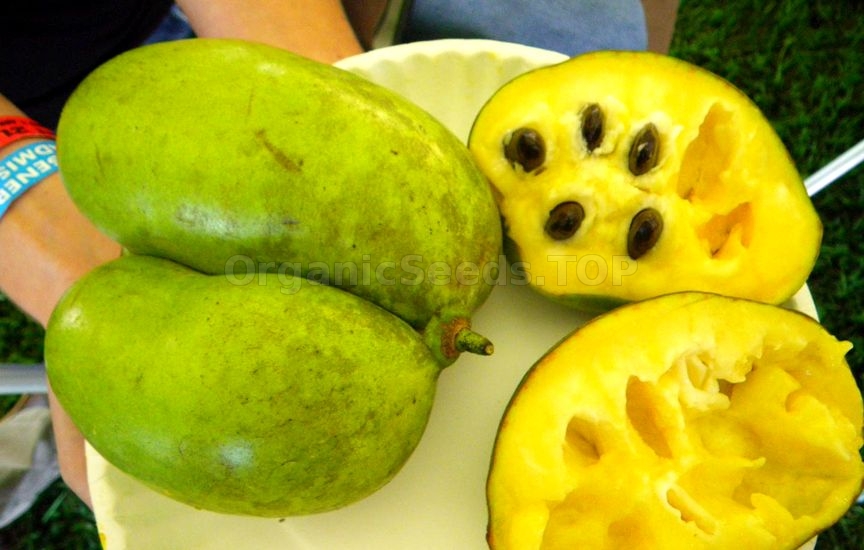 But the tried and true method for harvesting pawpaws? Shake the tree! A gentle shake will send ripe fruit falling, while unripe fruit remains attached. If you’re growing fruit for market, however, you may want to skip this technique since pawpaws are quite delicate, and will bruise readily. You shouldn’t eat a pawpaw unless you can smell it. The strong, floral perfume announces the fruit’s readiness. If you’ve picked a pawpaw that was ripe (i.e. gave to pressure) but it’s not quite ready, you can let it continue to ripen on your counter for a day or more. In a day or two the fruit’s aroma will fill the room and you’ll know it’s time to eat your pawpaw. 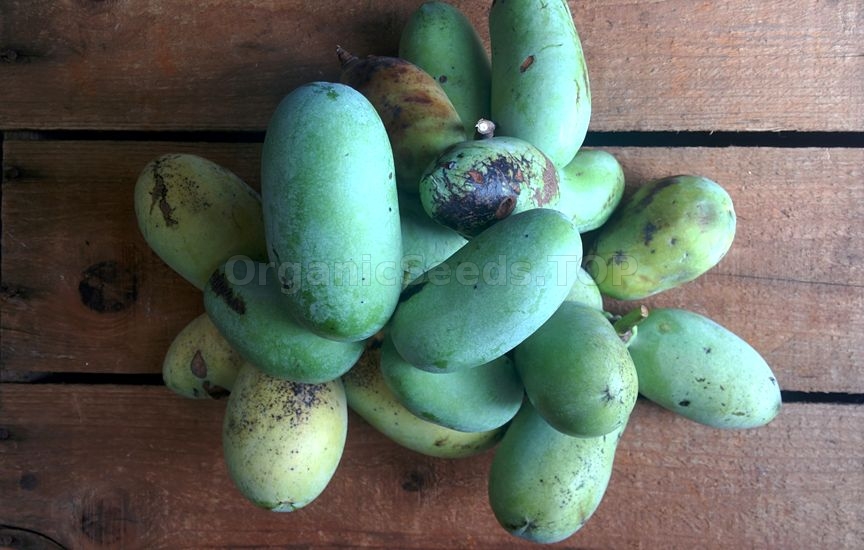 That the pawpaw has a short shelf life is well known among its enthusiasts. But could this reputation have been exaggerated to some extent? If you’ve harvested from the wild, and you’ve picked fruit from the forest floor, those pawpaws are nearer to fermentation than not. But it’s unknown how long they’ve been lying there in a pile of wet leaves; the fall from the tree likely caused a bit of bruising, also hastening its demise. On the other end of the spectrum, I’ve had pawpaws, picked directly from the tree, retain a high quality of flavor when stored at room temperature up to four or five days. It’s not the greatest shelf life, but perhaps it’s not so bad either. Furthermore, fresh fruit can be refrigerated for several weeks, or frozen. Pulping fruit is time consuming, but worth it: pawpaw freezes well, and can be stored for more than a year. 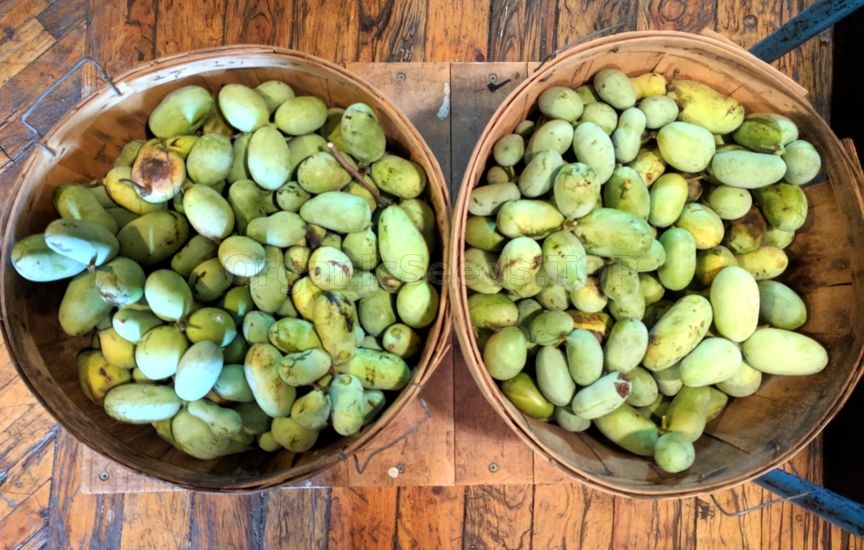 You may need:Pawpaw Organic Seeds (Asimina triloba)Common Pawpaw Seeds (Carica Papaya) |
|
|
